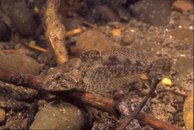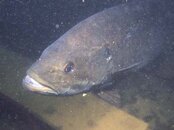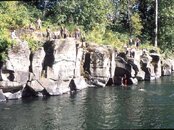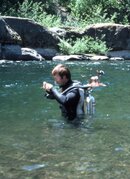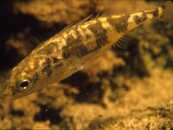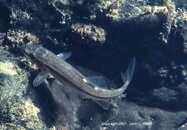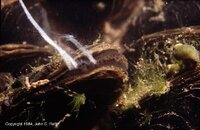I have a somewhat different tract on this thread than most others here. You see, I've been doing this type of diving for over fifty years now in Oregon rivers. I find the current diving to be a great form of exercise. So rather than saying whether you should or should not do this kind of diving, I'll give you some insights from a half century of diving these conditions.
--If you have a doubt about a dive, abort. This is your mind telling you something is not right. This is what you did for one dive, which means you understand this message. I evaluate the river each time I dive, and if it doesn't look right, I simply don't dive and do something else. Do not try to rationalize a dive when your inner self says you should not dive. Just accept that, and try again another day.
--If you use a float, use a floating line. That will cut down on the entanglement, both for you and the bottom. I have been using a float of late, but that is because there were people jumping from the rocks thirty feet above and the lifeguards were in the area. As others have said, floats are a pain, especially with the line. I have untangled my fins several times this summer. But a float will tell others where you are located.
--Now, it is likely I'll have to wait to dive as the river conditions have deteriorated. River conditions change rapidly, and there are times (seasons) where you don't want to be in the water.
--Too much equipment is a real problem in current. For all those suggesting redundant equipment (pony bottles, etc.) think about how that equipment handles in a current.
--Get to know one section of the river, and stick to that part of the river. That way, even with the lowered visibility, you'll know where the hazards are located.
--Learn to use the current and the obstructions. Get to the bottom, find the eddies to rest in just like the fish do. Learn how to quarter a current to go across the river, and to be able to go hand-over-hand upstream too. That's part of the fun.
--I never did spearfish in the river, as we in Oregon are not really allowed to do that on fish big enough to spear. Yes, there are suckers and Northern Pike Minnows that I could spear, but I actually enjoy simply observing them and learning their behaviors.
--The greatest entanglement hazard is fishing line. Be sure you knife is sharp (I dive only one knife), and mine has a line-cutting hook built into the blade. I sharpen my knife every few months, and that includes using a file for the serrated edges too.
--Collect the fishing gear, and give some lures to fishermen and women when you get out; it will give them a better impression of divers.
--I have kept a dive log for many years, and one section is called "Special Problems and Ideas." In here I list every problem I had on the dive, I can track things and spot repeats and track trends. It is important to write down everything that went wrong, and work to correct those on the next dive.
I hope these will help you, as I don't think any of the adverse comments here will detour you from diving. For those who think they are always in control, know that you are never completely in control of circumstances, and that only your accumulated knowledge will help you out if conditions deteriorate. If things go bad, get to the surface and don't be afraid to inflate the BC and ditch weights. But this probably won't have much real problems, and this type of diving can not only be challenging, but also fun. It's the details which will get you, so pay attention to the details, and everything else will fall into place. Have a plan for the dive, and follow it. But if conditions change underwater, know that the plan can be chucked too if it helps the dive be successful. Learn the currents in your particular location, and know how they will help rather than hinder you in the dive.
Rather than hunting, I take photos. Below are some photos of my diving in the Oregon rivers.
SeaRat
